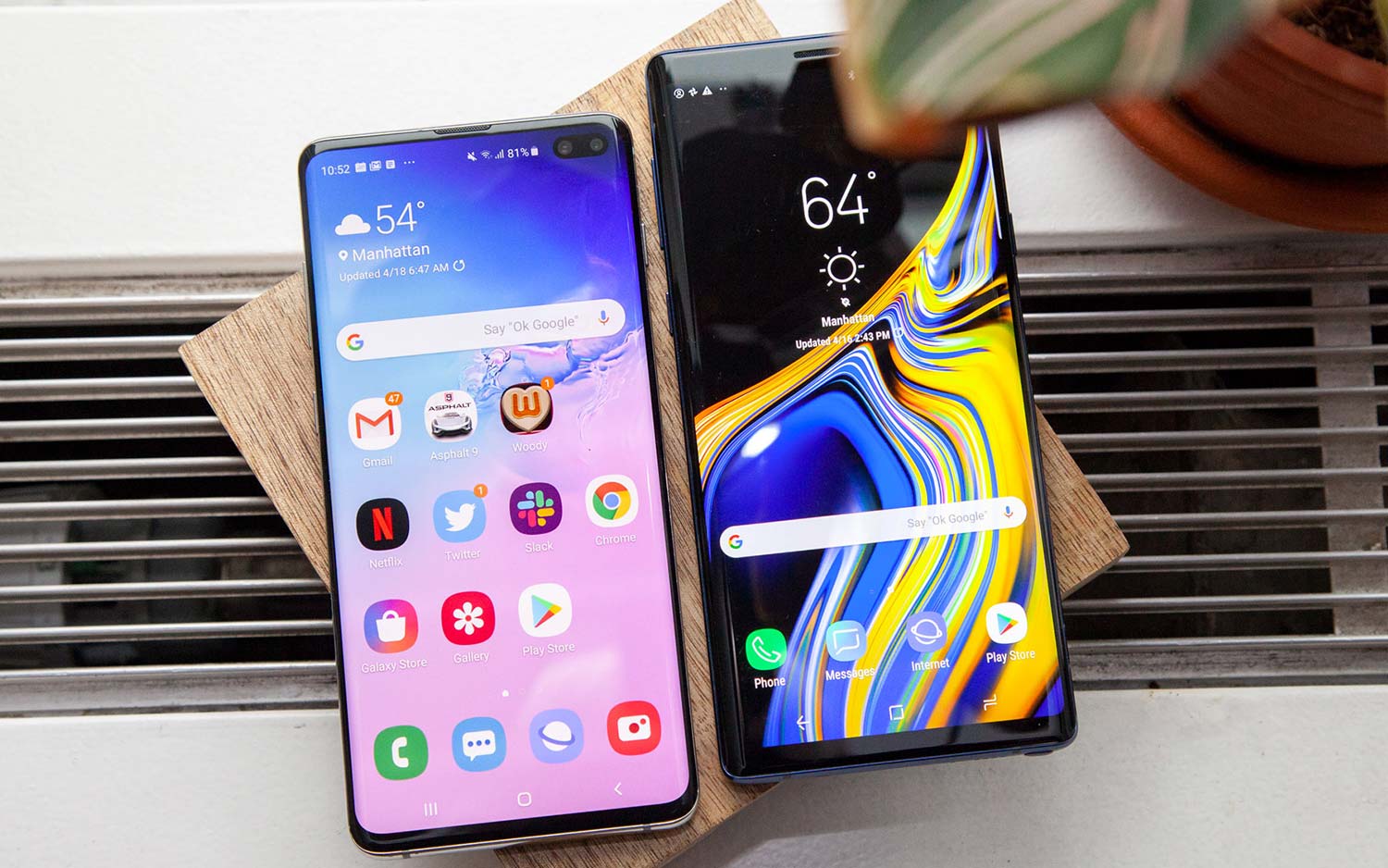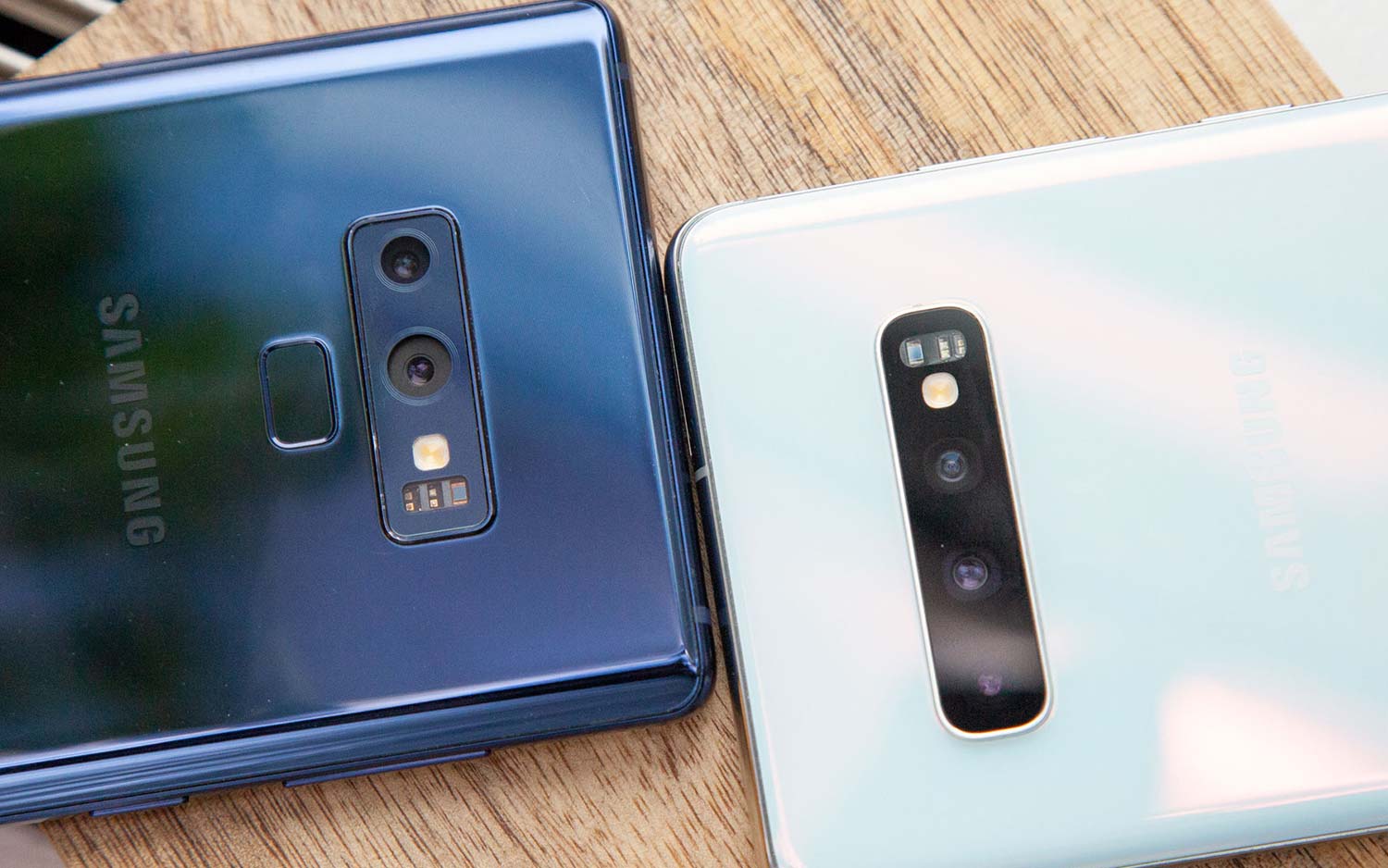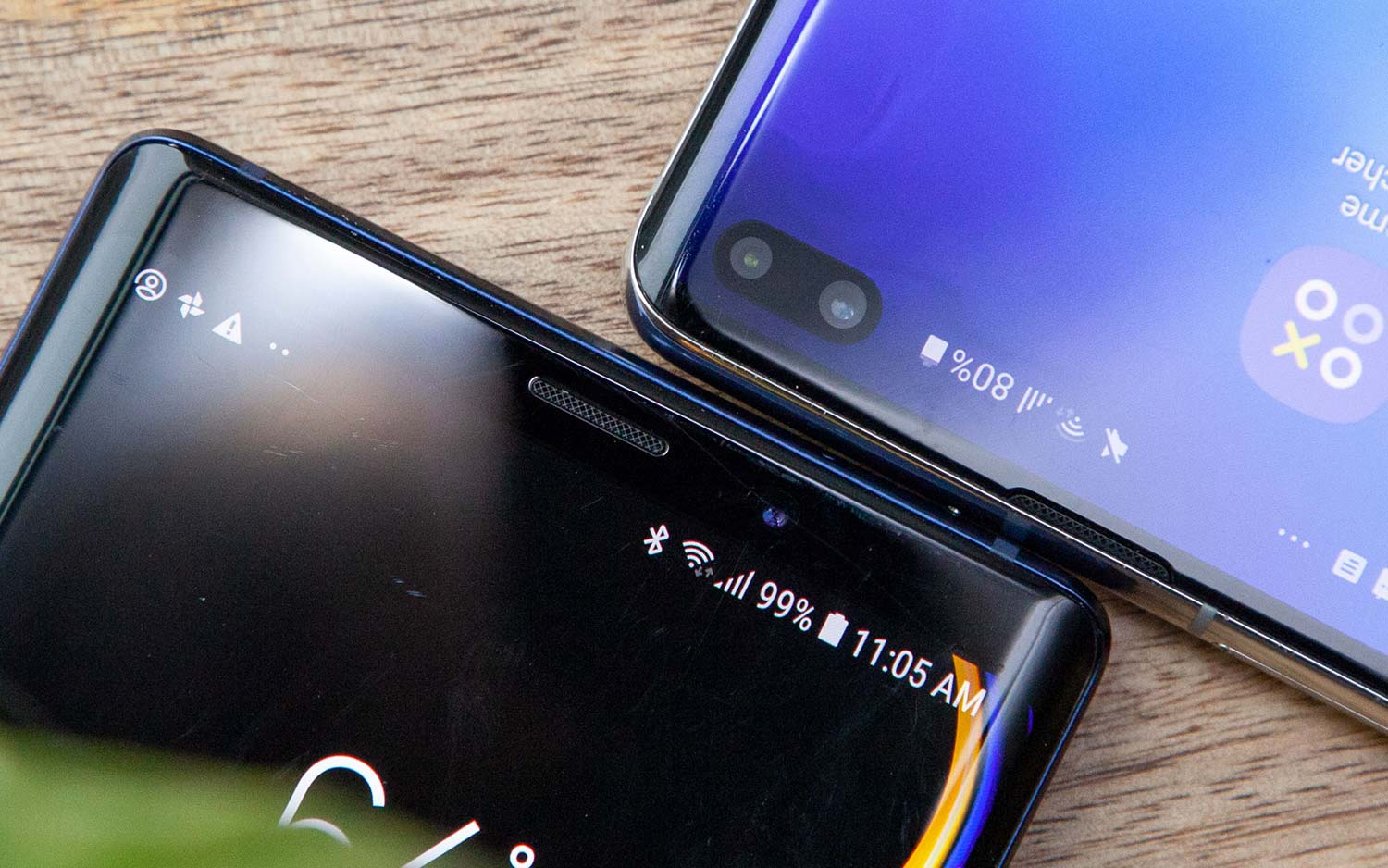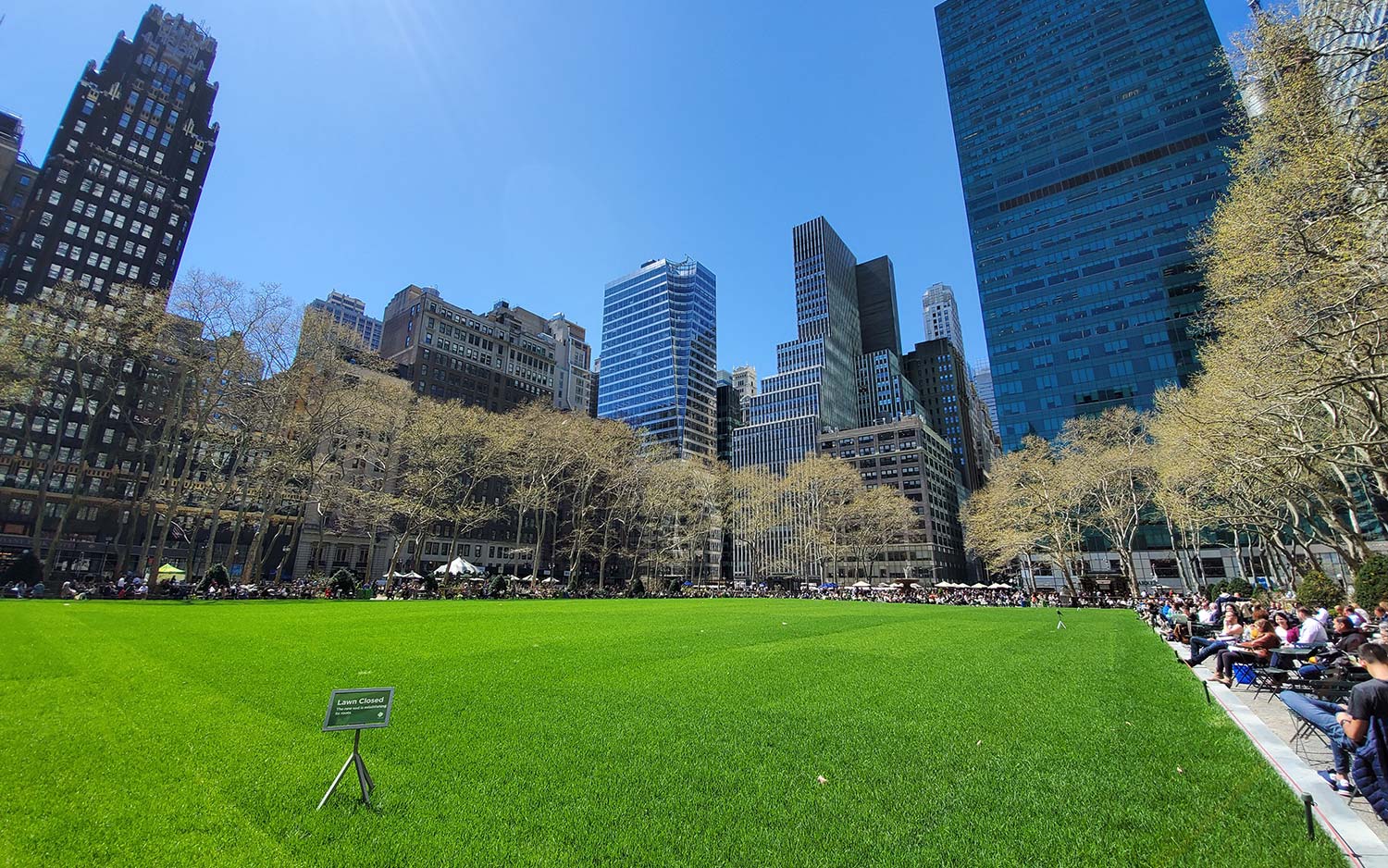Galaxy S10 Plus vs. Note 9: Which Samsung Phone Has the Best Camera?
The Galaxy S10 Plus and Note 9 both boast excellent cameras. We pitted the two phones against each other in a photo face-off.
Samsung clearly put a lot of effort into improving the cameras on its new Galaxy S10 lineup, going with a triple-lens setup on the back of the Galaxy S10 and S10 Plus, while also making software improvements aimed at producing better photos. It's enough to place Samsung's latest phones among the best options for smartphone cameras. But is the S10 even the best camera phone that Samsung makes?

After all, the Galaxy Note 9 isn't that much older than the S10, and it sports its own array of AI-powered features along with a pair of dual rear cameras that previously set the standard for Samsung's smartphones. Can it hold its own against more recent phones from the same manufacturer?
To find out, we took a Note 9 and pitted against the Galaxy S10 Plus in a camera face-off. Here's how these two Samsung phones fared.
How the cameras compare
You can break down the camera differences between the Galaxy S10 Plus and the Note 9 into two categories — lenses and artificial intelligence.

Regarding lenses, the Note 9 sports two rear shooters, with its main 12-megapixel lens able to switch between apertures of f/1.5 or f/2.4 depending on available lighting or whether you want crisper shots. A second 12-MP telephoto lens supports a 2x optical zoom.
Those same cameras are on the back of the Galaxy S10 Plus (as well as the Galaxy S10), but Samsung added a third lens to its newer phones — a 16-MP ultra-wide lens joins the two 12-MP shooters. That extra lens lets you pull back to add in more details you wouldn't be able to capture with the Galaxy Note 9's dual-lens setup.
Get instant access to breaking news, the hottest reviews, great deals and helpful tips.
MORE: Galaxy S10 vs Pixel 3 Camera Shootout: Which Phone Wins?
As for AI, the Scene Optimizer feature introduced with the Note 9 helped the phone recognize the kind of scene you were shooting — food, portraits, sunrises and more — and adapt settings on the fly so that exposure, white balance, contrast and brightness are fine-tuned for that particular photo. The feature is supported on the Galaxy S10, too, only Samsung's new phones recognize 30 different scenes to the 20 that the Note 9 can spot.

We also picked the S10 Plus for this face-off because it differs from the Note 9 in one other substantial way. The S10 Plus adds an 8-MP depth-sensing camera alongside a 10-MP selfie cam on the phone's front. There's just one front camera on the Note 9 — an 8-MP shooter.
What do these changes mean when it comes to the respective images that the Galaxy S10 Plus and Note 9 produce? Here's what we shot using both Samsung phones.
Outdoors
There's not much separating the shots of this New York City Park captured by the Galaxy S10 Plus and the Note 9. Apart from a lens flare producing a rainbow streak on the middle left side of the S10 Plus shot, it would be hard to spot any significant differences between the two photos. The blue sky is a little bit richer in the S10's photo, and the Note 9 dulls the brown building on the left a bit when compared with the S10's shot. But these are very minor differences.
But the S10 Plus has another trick up its sleeve, thanks to that ultra-wide lens. When we pull back with that lens, we add more details to the shot, such as additional buildings and people seated around the park's green grass (which is a more vivid shade of green in this shot). The ultra-wide lens on the S10 Plus adds a noticeable fisheye effect to the shot — objects at the edge of the frame tend to bend inward — and that might detract from the shot for some people. But there's no arguing that the S10 Plus is capable of capturing more detail than the Note 9 when it comes to landscapes.

Winner: Galaxy S10 Plus
2x Zoom
Once again, you'd be hard-pressed to really pick out differences between the shots Samsung's two phones produced when we zoomed in on a tulip. The optical zoom really picks up the tiny details of the tulip — you can make out the textures and wrinkles on the petals, and the color shifts from bright red to a softer pink in both shots.
In the S10 Plus' shot, the purple flowers in the background to the tulip's immediate right aren't lost in shadow the way they are when photographed by the Note 9, but that's a marginal difference. We think the S10 Plus produces a better shot overall, but it's a whisker-thin difference.
Winner: Galaxy S10 Plus
Indoors
The Note 9 upstages Samsung's newer phone when we headed inside to snap a photo at a coffee-shop counter. The baked goods in the Note 9's photo have richer, warmer colors, and even the shadows captured in the shot provide a good contrast, highlighting the brownies and cookies at the heart of the photo. The edges of the Galaxy S10 Plus are better exposed, with the coffee cake in particular standing out. But the less saturated colors in the S10's photo don't feel as inviting, and the food looks less appealing as a result.
Winner: Note 9
Low-Light
All we can say about the photos produced when we went back into our studio and turned out the lights is that we wish we had a Pixel 3 XL and its pace-setting Night Sight feature to capture this shot. Neither the Galaxy S10 Plus nor the Note 9 produced a very compelling photo — surprising since the S10 adds a Bright Night mode to its Scene Optimizer capabilities that's supposed to improve photos when the lights are low.
Even more surprising, the Note 9 does a better job in this situation, relatively speaking. You can make out the complete heart on the wrapping around the bottle in the Note 9's shot, whereas that detail gets subsumed by shadows in the S10's photo. The S10 Plus also struggled to keep the flowers on the left side of the photo, and everything in the middle of the shot looks like an inky smudge. You can at least see where the globe ends and the bush begins in the Note 9's effort.
Winner: Note 9
Portrait
When it came time to take a portrait shot of my colleague Caitlin, the Note 9 produced the better effort. The S10 Plus captured more of the background details, including more trees, buildings and passersby. But that works to the photo's disadvantage, as it calls more attention to the background blur instead of keeping the focus on Caitlin. The blur effect in the S10 shot also doesn't completely obscure a passerby to Caitlin's right, making his jacket seem like part of her left arm. The S10 does do a better job at making Caitlin's hair stand out from the background, though.
What really distinguishes the Note 9's shot, though, is how bright it is. The colors make everything pop, whether it's the green grass in the background or Caitlin's jacket. Her face is better illuminated in the Note 9's photo, too, and that's what you want to see in a portrait shot.
Winner: Note 9
Group Portrait
Add more people to the mix in your portrait shot, and the Galaxy S10 Plus gets a little bit of its own back. Once again, Samsung's newer phone captures a wider background, though here it's more effective, with more people to fit into the shot. The colors are brighter in this effort, too, though the S10's blur effect failed to catch a passerby standing just behind the left shoulder of my colleague Phillip.
That would normally give more of an edge to the Note 9's photo, but there's a problem with light in that shot. There's too much of a glare on half of Phillip's face, and Caitlin's skin tone has an unnaturally pale cast.
Winner: Galaxy S10 Plus
Selfie
My colleague Adam turned the phones' cameras on himself, and the Galaxy S10 Plus emerges as the better choice for self-portraits. Both shots had to deal with challenging sunlight coming in from the left and potentially washing out Adam's face. That happens to some extent in the Note 9's photo, particularly on his forehead and the areas around his cheekbone not bathed in shadow. But those parts of his face remain well-defined in the S10 Plus selfie, even though they're also in sunlight. The flowers in the background are sharper and more distinct in the S10's photo, too.
Winner: Galaxy S10 Plus
Bottom line
| Galaxy S10 Plus | Note 9 | |
| Outdoors | ✓ | |
| 2x Zoom | ✓ | |
| Indoors | ✓ | |
| Low-Light | ✓ | |
| Portrait | ✓ | |
| Group Portrait | ✓ | |
| Selfie | ✓ | |
| Overall | 4 | 3 |
It's close, as you'd expect from two flagship phones made by the same manufacturer and released within six months of each other. But the Galaxy S10 Plus just edges the Note 9, thanks in part to that extra rear lens and improved AI. You're still getting a top-notch camera phone with the Note 9, but if you really place a premium on a handset that can take superior photos, the S10 Plus is the better bet.
The Galaxy S10 Plus has the same $999 list price as the Note 9 (though with deals for either the Note 9 or S10, you can probably find both devices for cheaper). The Galaxy S10 sells for $100 less at $899 while offering the same triple lens setup as the S10 Plus. You'll give up a little with self-portraits — there's just a single front lens on the S10 and it didn't perform as well as the S10 Plus' two front cameras in our tests — but for the most part, you can expect the same strong results when it's time to shoot a photo.
Credit: Tom's Guide
Philip Michaels is a Managing Editor at Tom's Guide. He's been covering personal technology since 1999 and was in the building when Steve Jobs showed off the iPhone for the first time. He's been evaluating smartphones since that first iPhone debuted in 2007, and he's been following phone carriers and smartphone plans since 2015. He has strong opinions about Apple, the Oakland Athletics, old movies and proper butchery techniques. Follow him at @PhilipMichaels.
-
Mariela5 hello!Reply
I've recently done comparison of both phones . Camera quality of S10 plus much higher then note 9 . So I suggest you to buy S10 plus it's reliable .

